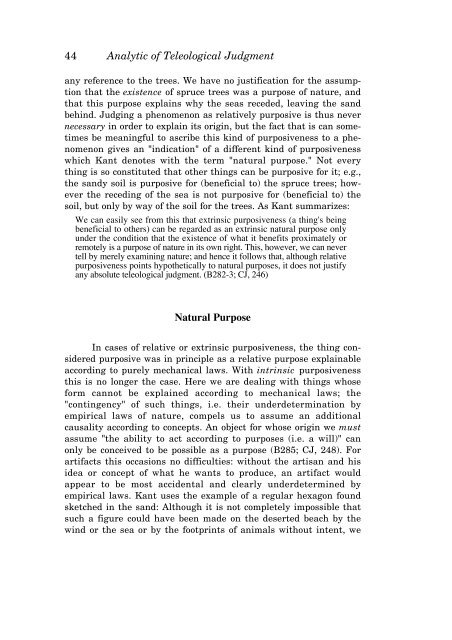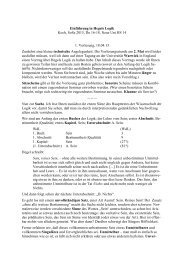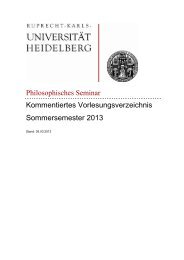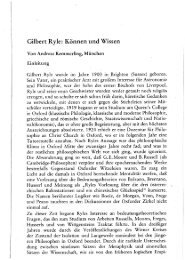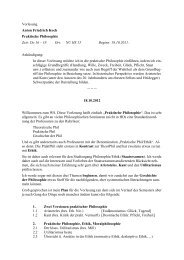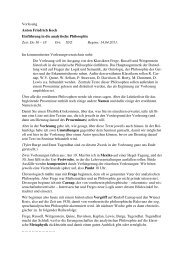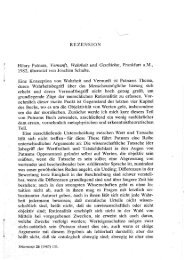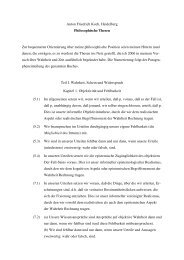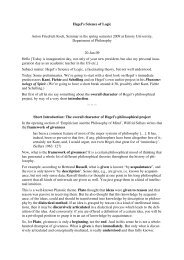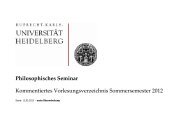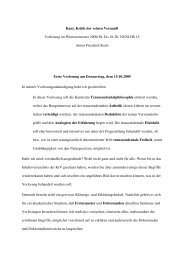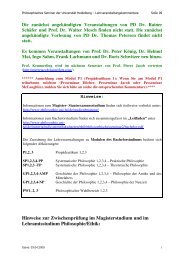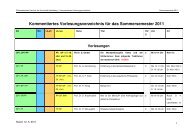KANT'S CRITIQUE OF TELEOLOGY IN BIOLOGICAL EXPLANATION
KANT'S CRITIQUE OF TELEOLOGY IN BIOLOGICAL EXPLANATION
KANT'S CRITIQUE OF TELEOLOGY IN BIOLOGICAL EXPLANATION
You also want an ePaper? Increase the reach of your titles
YUMPU automatically turns print PDFs into web optimized ePapers that Google loves.
44 Analytic of Teleological Judgment<br />
any reference to the trees. We have no justification for the assumption<br />
that the existence of spruce trees was a purpose of nature, and<br />
that this purpose explains why the seas receded, leaving the sand<br />
behind. Judging a phenomenon as relatively purposive is thus never<br />
necessary in order to explain its origin, but the fact that is can sometimes<br />
be meaningful to ascribe this kind of purposiveness to a phenomenon<br />
gives an "indication" of a different kind of purposiveness<br />
which Kant denotes with the term "natural purpose." Not every<br />
thing is so constituted that other things can be purposive for it; e.g.,<br />
the sandy soil is purposive for (beneficial to) the spruce trees; however<br />
the receding of the sea is not purposive for (beneficial to) the<br />
soil, but only by way of the soil for the trees. As Kant summarizes:<br />
We can easily see from this that extrinsic purposiveness (a thing's being<br />
beneficial to others) can be regarded as an extrinsic natural purpose only<br />
under the condition that the existence of what it benefits proximately or<br />
remotely is a purpose of nature in its own right. This, however, we can never<br />
tell by merely examining nature; and hence it follows that, although relative<br />
purposiveness points hypothetically to natural purposes, it does not justify<br />
any absolute teleological judgment. (B282-3; CJ, 246)<br />
Natural Purpose<br />
In cases of relative or extrinsic purposiveness, the thing considered<br />
purposive was in principle as a relative purpose explainable<br />
according to purely mechanical laws. With intrinsic purposiveness<br />
this is no longer the case. Here we are dealing with things whose<br />
form cannot be explained according to mechanical laws; the<br />
"contingency" of such things, i.e. their underdetermination by<br />
empirical laws of nature, compels us to assume an additional<br />
causality according to concepts. An object for whose origin we must<br />
assume "the ability to act according to purposes (i.e. a will)" can<br />
only be conceived to be possible as a purpose (B285; CJ, 248). For<br />
artifacts this occasions no difficulties: without the artisan and his<br />
idea or concept of what he wants to produce, an artifact would<br />
appear to be most accidental and clearly underdetermined by<br />
empirical laws. Kant uses the example of a regular hexagon found<br />
sketched in the sand: Although it is not completely impossible that<br />
such a figure could have been made on the deserted beach by the<br />
wind or the sea or by the footprints of animals without intent, we


